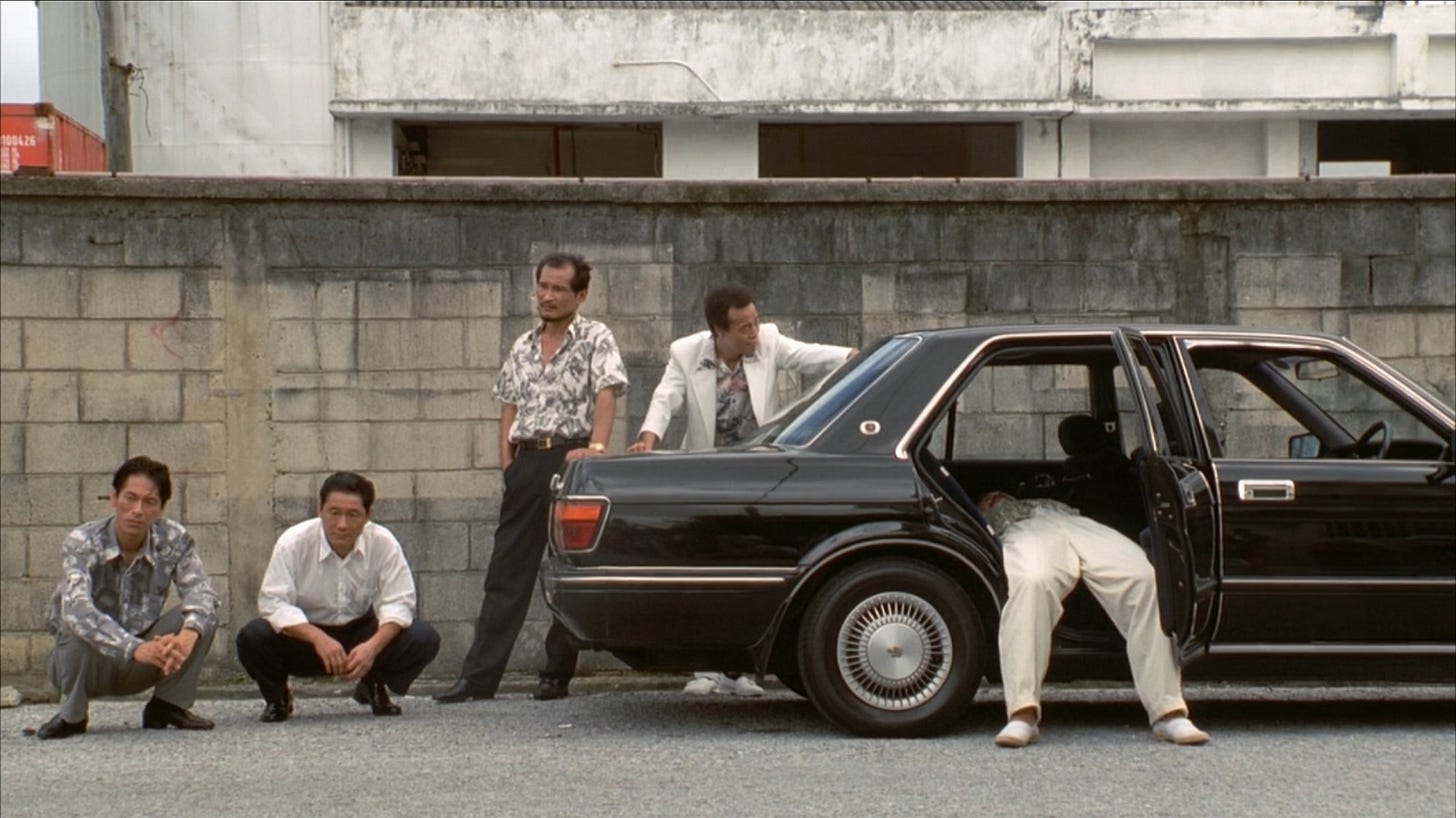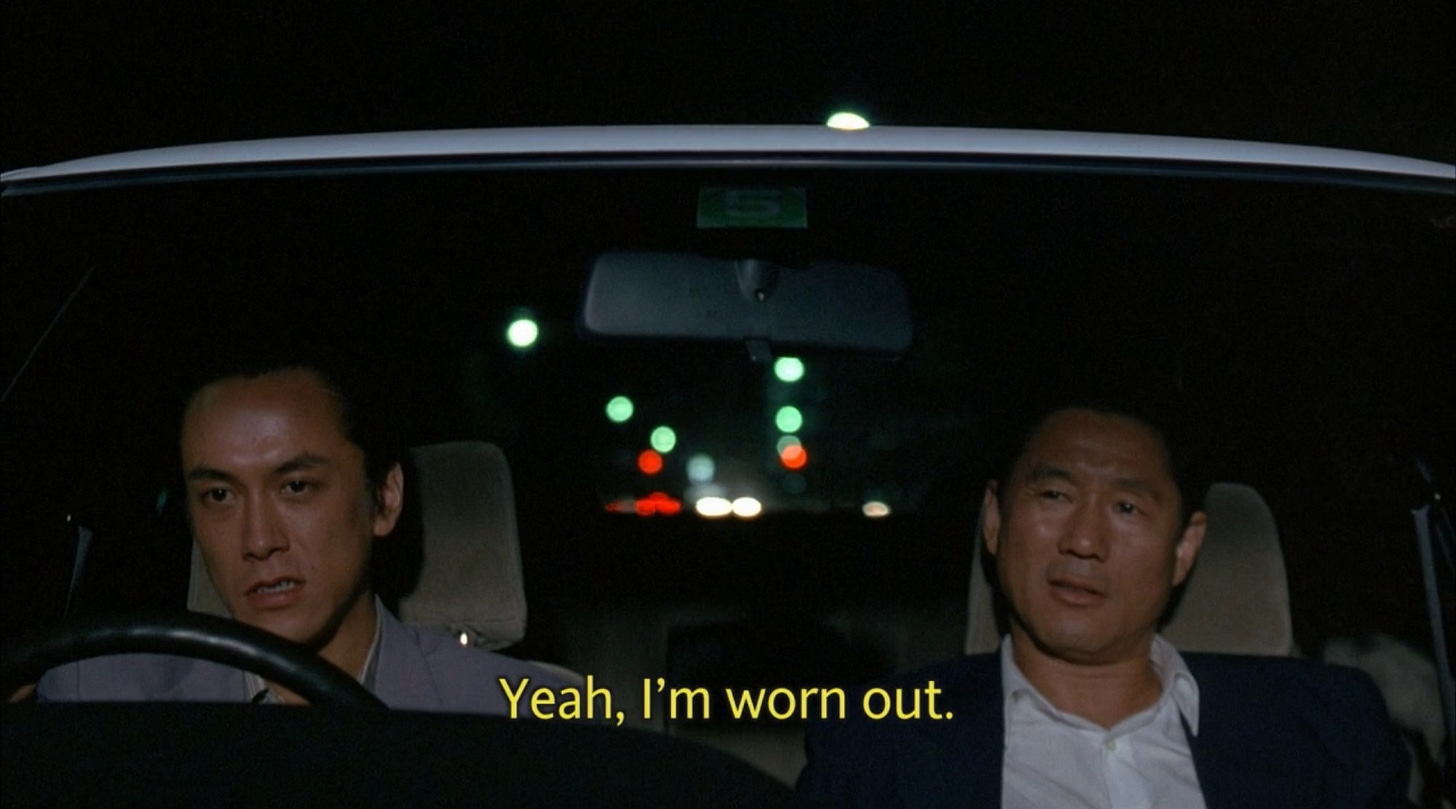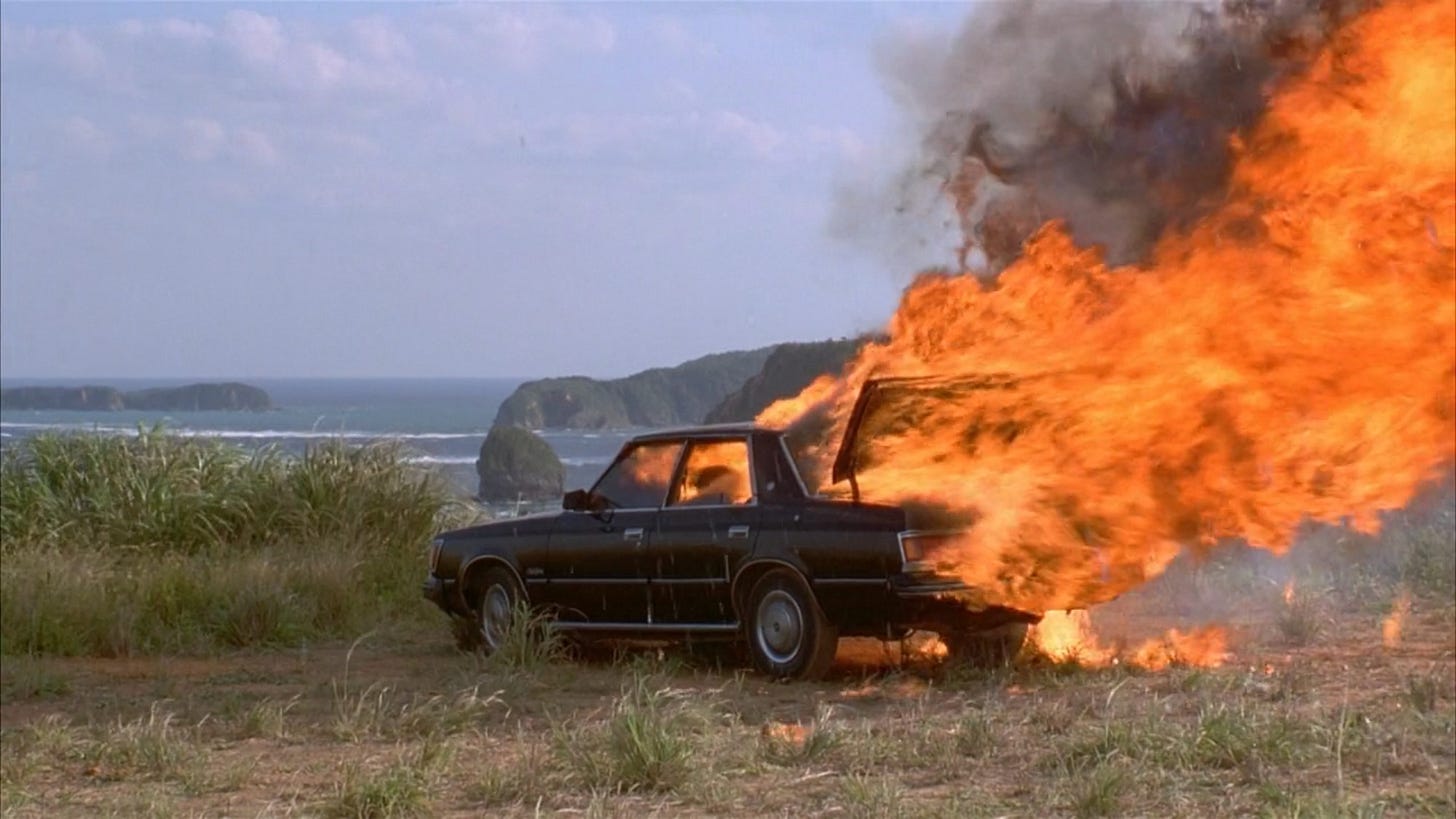Hi, I’m Bryan and this is my newsletter, Beat Happenings. I’m still getting the hang of things but each installment will focus on Japanese comedian, TV host, actor, and filmmaker Takeshi Kitano, a.k.a. Beat Takeshi, and one of his yakuza films. This week, Kitano’s 1993 international breakthrough, Sonatine.

Sonatine (1993)
I have a deep love for Takeshi Kitano’s Sonatine. It’s a movie that has transfixed me since I first checked out a blurry VHS copy of it from the La Verne Library back in 2001 and which I’ve seen close to 20 times since, as anyone who has ever lived with me can attest to. And one of the things I love most about it is how it’s changed for me over that time.
But I think after nearly two decades of watching Sonatine, what appeals to me most about it is that it isn’t even really a gangster film. Sure, it has all the trapping of the genre, especially during its first and final 15 minutes, but for about an hour in between these two sequences, it breaks all the rules and becomes something more singular.

Unlike in Boiling Point (1990), where he played a secondary (albeit scene-stealing) character, Kitano is front and center in Sonatine. He plays Murakawa, a Tokyo-based yakuza enforcer who’s good at his job but also thinking about retiring. Before he can figure out whether or not that’s even possible, his boss, Kitajima, dispatches him and a dozen of his men to mediate a local dispute in Okinawa. Though he’s assured it will be a simple job, Murakawa has his doubts. And within days of arriving in Okinawa, he’s proven right, as everyone but him, two of his lieutenants, and their local yakuza guides are either blown up or shot to death.
It’s in this first sequence that Sonatine most resembles a gangster film, with men howling at one another, stabbing each other in the stomach, and firing their guns every which way. Of course, this is all presented in Kitano’s trademark deadpan style with things inching along until someone tells a wry joke or everything erupts into blood-drenched violence. These action scenes—if they can even be called that—are more stylized than anything previously seen from the filmmaker. They’re almost completely devoid of energy, filled with blank-faced characters standing straight as a board, monotonously firing shots at one another until the clip is empty, they’re dead or they’ve fallen asleep out of boredom. Murakawa’s grown tired of the yakuza life, and it would seem that Kitano has too. But then the filmmaker flips everything on its head.
Down to five men, Murakawa’s crew flees the city in the middle of the night, driving for hours until they reach a sea-side cottage where they’ll hide out for much rest of the film. Here amid the rolling green hills, beige sand and endless blue ocean, the movie sheds its skin and reveals itself to be something else entirely. While trying to figure out if they’ve been betrayed (spoiler alert: they have), Murakawa and his men revert to an almost child-like state, playing innocent games in an attempt to entertain and distract themselves from just how dire things are.
Over the next hour, the men (and a woman who begins to tag along with them after Murakawa kills her would-be attacker) wear cheesy aloha shirts, sumo wrestle, shoot frisbees out of the sky, play practical jokes on one another, and stage a nighttime fireworks battle. Shot and edited in a thrillingly disorienting way, and featuring a haunting score by frequent Hayao Miyazaki collaborator Joe Hisashi, it all begins to feel like a dream, especially the sumo match, one of the most memorable scenes I’ve ever seen. The entire beach sequence offers a glimpse at a more peaceful and better existence for all. But they’re still yakuza, so there’s only so long that it can last. And while Murakawa is ultimately given the chance at a happy ending, his story ends the way he always knew it would.
Kitano doesn’t just subvert the yakuza genre in Sonatine, he rejects it entirely. And the resulting film is one of the best gangster films I’ve ever seen. While he’d return to the genre soon enough, his approach would never be the same, and his movies would be all the better for it.

That’s it for the third installment of Beat Happenings. Next week, I’ll be writing about Kitano’s Golden Lion-winning 1997 film, Hana-bi (released in the U.S. as Fireworks). If this week’s issue has piqued your interest at all, Sonatine is available to rent on Amazon Video, iTunes, and YouTube Movies. In the meantime, I’d love to hear any comments or suggestions you may have about the newsletter. Just reply to this email and let me know what you think.


